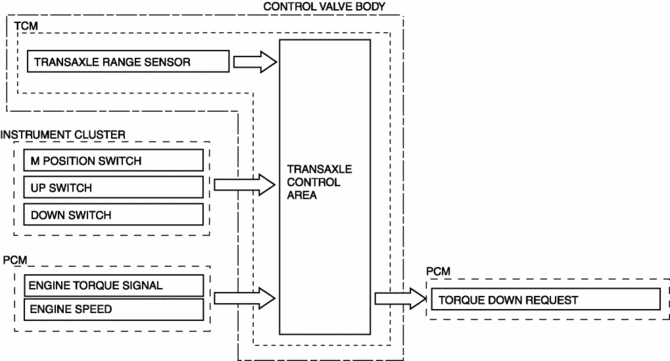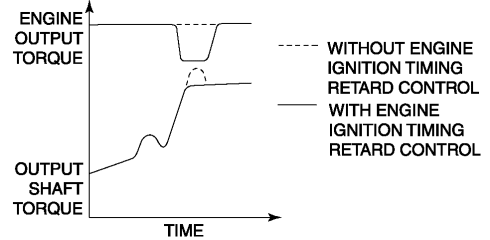Mazda CX-5 Service & Repair Manual: Engine Transaxle Integration Control [Fw6 A EL, Fw6 Ax EL]
Outline
-
The TCM controls engine output torque and reduces transaxle output shaft torque fluctuation during auto shifting, and reduces shock occurring from the vehicle during shifting.
Construction

Operation
-
During auto shifting, the TCM sends the torque reduction request signal using the CAN system and temporarily reduces the engine output torque by the engine ignition timing retard control. As a result, transaxle output shaft torque fluctuation is reduced during auto shifting by smooth engagement of the clutch.

-
In addition, the TCM receives the engine output torque from the PCM via the CAN signal to determine the clutch engagement pressure according to the engine output torque. As a result, the clutch hydraulic control setting accuracy is increased and smooth shift performance is achieved.
 General
General
...
 Output Gear [Fw6 A EL, Fw6 Ax EL]
Output Gear [Fw6 A EL, Fw6 Ax EL]
Purpose/Function
The output gear transmits the drive force transmitted from the primary gear
and secondary gear to the differential.
Construction
The output gear is engaged with ...
Other materials:
Oil Seal (Differential) Replacement [C66 M R]
1. Remove the front under cover No.2..
2. Drain the manual transaxle oil..
3. Disconnect the drive shaft (LH) from the MTX..
4. Disconnect the drive shaft (RH) from the MTX..
5. Remove the oil seal (LH).
6. Remove the oil seal (RH).
7. Using the SSTs and a hammer, tap a new oil s ...
Power Window Subswitch Inspection
1. Disconnect the negative battery cable..
2. Remove the power window subswitch..
3. Verify that the continuity between the power window subswitch terminals is
as indicated in the table.
If not as indicated in the table, replace the power window subswitch.
...
A/C Unit Disassembly/Assembly
1. Disassemble in the order indicated in the table.
CAUTION:
If a non-specified grease is used, it may result in abnormal noise or improper
operation of the links. Apply only the specified grease to each link.
2. Assemble in the reverse order of disassembly.
...
